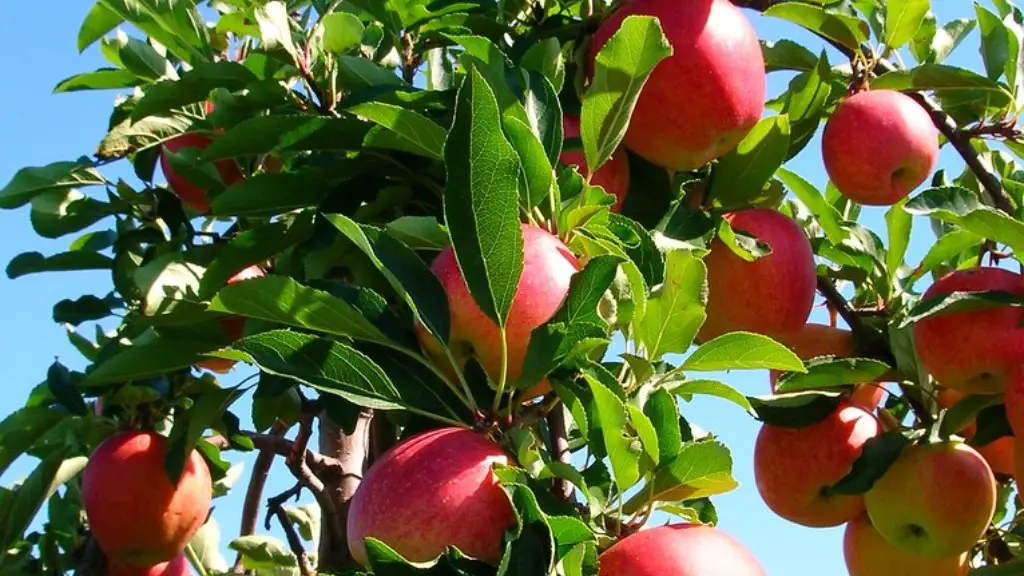Growing lemon trees indoors is an excellent way to have fresh lemons any time of the year. With a little bit of time and effort, you can easily grow a lemon tree in your home and enjoy the delicious fruits of your labor. Here are the steps to take to get your very own lemon tree.
Pick a good variety. Lemon trees come in a variety of sizes, colors and shapes, so choose the one you prefer. Dwarf varieties are ideal for smaller spaces, while larger varieties are great for large balconies or back yards.
Find the right pot. You need a pot that’s large enough for your tree’s root system, with good drainage and holes in the bottom. If possible, buy a pot with a built-in reservoir for extra water.
Gather supplies. Get a bag of soil mix specifically for citrus trees, potting mix, and the fertilizer your tree needs. Make sure to get organic fertilizer if you’re growing organic lemons.
Prepare the soil. Mix the soil, potting mix and fertilizer in a large container. Then, fill ¾ of the pot with the soil mix.
Add the tree. Plant your tree and fill the rest of the pot with the soil mix. Water thoroughly, adding more soil mix if it settles. Place the pot near a south-facing window.
Care for your plant. Water your tree regularly, and fertilize it with an organic fertilizer every two months. Prune your tree as needed, and check for pests, like mites, periodically. With a bit of love, your lemon tree will thrive.
Watering your lemon tree
Water your lemon tree deeply and frequently, to encourage strong, healthy growth. You should water it 2-3 times a week, depending on the size of the pot. Make sure the soil is moist, but not soggy, and check that the water is draining out of the bottom of the pot.
During hot, dry days, water your tree every day. If water runs off, consider using a water-storing soil additive. This will help to keep the soil moist longer, and prevent it from drying out too quickly.
Keeping the soil too wet can also cause problems for your tree. Too much water can cause root rot. If you suspect root rot, gently remove your tree from the pot, and check for soggy roots.
If the roots are indeed rotting, wash them off and repot the tree in fresh soil mix. Make sure the new pot drains well, and monitor the soil moisture level more closely.
When in doubt, it’s best to err on the side of less watering than more. Lemon trees prefer dry soil rather than moist, and you should always avoid overwatering.
Fertilizing your lemon tree
Fertilizing your lemon tree is essential to help it grow strong and healthy. Feed it with an organic fertilizer every two months, using a fertilizer specifically designed for citrus plants.
When applying fertilizer, use a light touch. Too much fertilizer can cause damage to the leaves and roots, and can even kill the plant. Follow the directions on the fertilizer package carefully.
You should also regularly check your lemon tree for pests, such as mites. If you find pests, act quickly with an appropriate insecticidal soap or horticultural oil.
Don’t forget to prune your lemon tree as needed. Pruning helps to keep it healthy and promote new growth. Prune off dead branches, or any branches that cross over each other or rub against each other.
With a bit of effort, your lemon tree will thrive and bear delicious fruit. With regular care and maintenance, you can enjoy the fruits of your labor all year round.
Harvesting your lemons
Harvest your lemons when they are fully mature. Lemons are usually ready to harvest when they turn yellow and have a smooth, glossy skin.
Pick them in the morning, when they are fully hydrated. Avoid picking lemons that have soft spots or that are under-ripe.
Carefully remove the lemons from the tree, and store them in a cool, dry place if you don’t plan to use them right away. To preserve the lemon juice and flavor, store them in the refrigerator.
Lemons picked from your own tree will taste fresher and sweeter than store-bought lemons. Enjoy them in salads, cocktails and baked goods, or even just with a bit of sugar sprinkled on top.
Troubleshooting your lemon tree
If your lemon tree isn’t growing as well as you’d like, check for common problems. An inadequate water supply or too much fertilizer can cause a different number of issues, ranging from yellow leaves to poor growth.
Other common problems are sunburn and frost damage. Make sure the pot is placed in a spot where it’s still getting plenty of light, but isn’t too hot.
If you’re experiencing problems with pests, use an appropriate insecticidal soap or horticultural oil. Finally, make sure that your tree is getting all the nutrients it needs, by using a fertilizer designed for citrus.
Following these steps should help to prevent many common problems, and keep your lemon tree growing strong.
Repotting your lemon tree
Your lemon tree will eventually outgrow its pot, and need to be repotted. This is usually done once a year, in the spring.
Start by removing the lemon tree from its pot, and gently patting the roots. If there are any damaged or rotted roots, gently prune them off.
Then, fill a new pot with fresh soil mix, and add fertilizer if needed. Place the tree in the new pot, and fill it with soil, making sure to fill the bottom with the soil mix.
Water your tree thoroughly, making sure that the water drains out the bottom of the pot. Place it back in its spot near the south-facing window, and give it plenty of sunshine and water.
Repotting a lemon tree can be a bit of a hassle, but it’s worth it for the long-term health of the tree. It’s also a good opportunity to add fresh soil and fertilizer, and see if the tree needs any pruning.




